The Royal Navy in WWI
 Rule Britannia: Circa 600 vessels 1914-18
Rule Britannia: Circa 600 vessels 1914-18

The Grand Fleet in the firth of forth. The very image of absolute confidence in its superiority.
The Royal Navy in 1914 represented the absolute naval superpower worldwide, uncontested, unbeatable both by numbers and quality of the ships and crews, the absolute reference. It was moreover the central instrument that helped shaping an immense colonial empire, and a strong symbol of worldwide supremacy.
It marked so deeply the young “Willy” that the future Kaiser Whilhelm II made it its personal obsession.
For him Germany deserved better, and the only way to gain a colonial empire was to build a powerful navy, a rival for the Royal Navy. Knowing this since 1905, as well as the rise of the “new” US Navy impregnated by the expansionist ideas of Alfred T.Mahan, supported by the “Falcons” as well as the Japanese Navy.
- 26-Knotters
- 27-knotters
- 30 Knotters
- 33 Knotters
- A class submarines (1902)
- Acheron class destroyers (1911)
- Acorn class destroyers (1910)
- Active class Cruisers
- Admiralty M-class destroyers
- Admiralty type (Scott class) flotilla leaders (1917)
- Apollo class cruisers
- Astraea class protected cruisers (1893)
- B class submarines (1904)
- Battleship HMS Erin
- Bay class Frigates (1945)
- Beagle class destroyers (1909)
- Bellerophon class battleships
- Blake class protected cruisers
- British C class cruisers (1914-1922)
- British Early Turbine Destroyers
- British Gunboats of WWI
- British P-Boats (1915)
- Canopus class battleships (1897)
- Centurion class Battleships (1892)
- Colossus class Battleships
- Courageous class battlecruisers (1915)
- Cressy class armoured cruisers (1899)
- Danae class cruisers (1918)
- Devonshire class Armored Cruisers (1903)
- Diadem class armoured cruisers (1896)
- Drake class Armoured Cruisers (1901)
- Duke of Edinburgh class (1904)
- Duncan class Battleships (1901)
- Edgar class protected cruisers (1891)
- Flower class Sloops (WWI)
- Formidable class battleships (1898)
- Forward class scout cruisers (1904)
- Hawkins class cruisers (1920)
- HMS Agincourt (1913)
- HMS Argus (1917)
- HMS Ark Royal (1914)
- HMS Campania (1915)
- HMS Canada (1913)
- HMS Dreadnought (1906)
- HMS Furious (1917)
- HMS Hermes (1919)
- HMS Neptune (1902)
- HMS Swift (1907)
- HMS Tiger (1913)
- Holland class Submersibles (1901)
- Indefatigable class battlecruisers (1907)
- Invincible class Battlecruisers (1907)
- Iron Duke class Dreadnoughts (1911)
- King Edward VII class Battleships (1903)
- King George V-class battleship (1911)
- L class submersibles (1917-1919)
- Lion class Battlecruisers (1910)
- London class battleships (1899)
- Lord Nelson class battleships (1906)
- Majestic class battleships (1894)
- Minotaur class Armoured Cruisers (1906)
- Monmouth class Armoured Cruisers (1901)
- N3 (St Andrews) class Battleships (1918)
- Nordenfelt Submarines (1885)
- Orion class Battleships (1911)
- Powerful class Armoured Cruisers (1895)
- Queen Elizabeth class Battleships (1913)
- Renown class battlecruisers (1916)
- Revenge class Battleships (1915)
- River class destroyers (1903)
- St Vincent class battleships (1908)
- Swiftsure class Battleships (1905)
- Thornycroft Type (Shakespeare class) Destroyer Leaders (1917)
- Town class cruisers
- Tribal class destroyers (1905)
- Turbinia (1894)
- Warrior class armoured cruisers (1905)
- WW1 British Battlecruisers
- WW1 British Battleships
- WW1 British Cruisers
- WW1 British Destroyers
- WW1 British Monitors (1911-1918)
- WW1 British Seaplane Carriers
- WW1 British Submarines
- WW1 British Torpedo Boats (1879-1908)
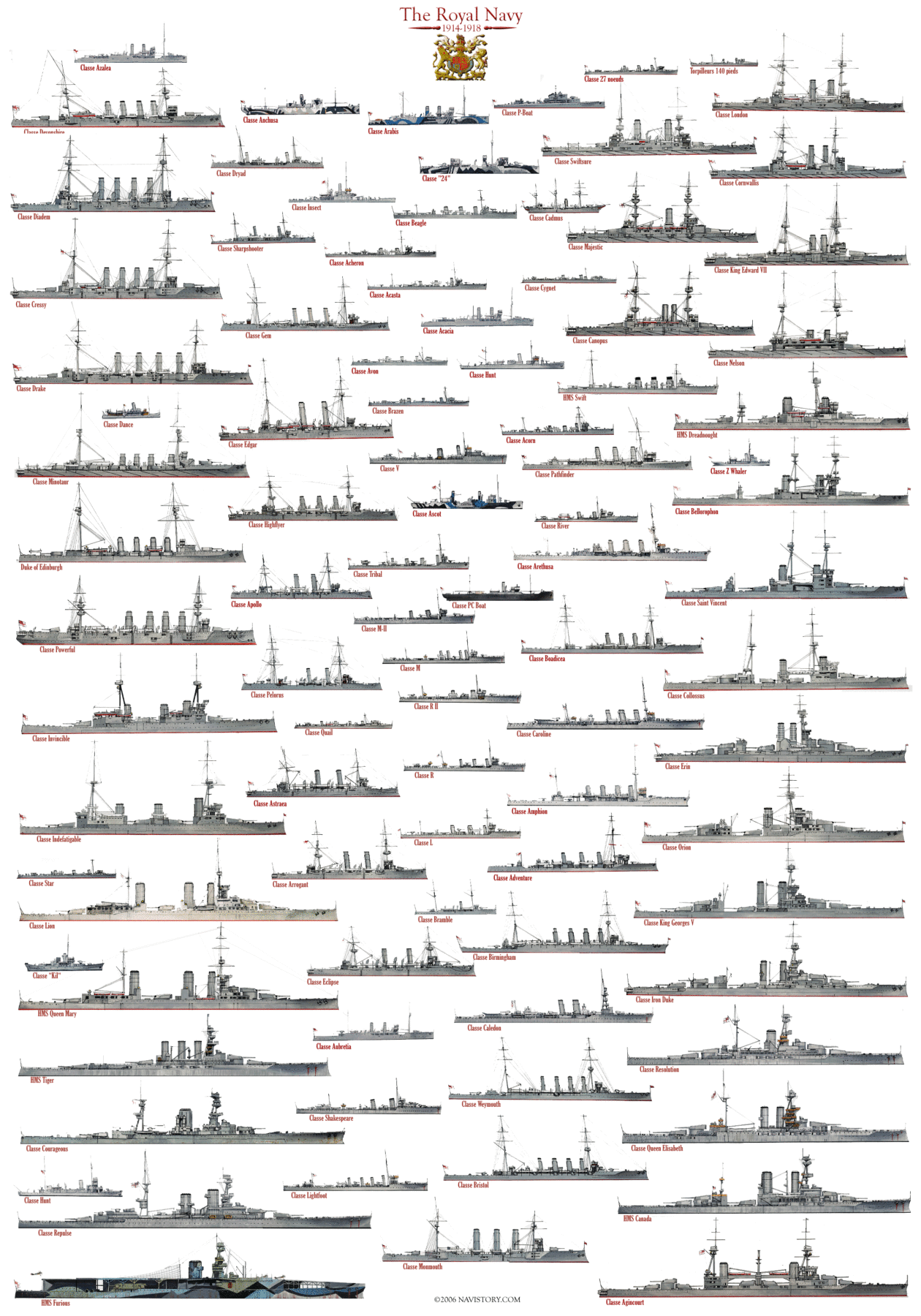
POSTER: All the classes of ships in service with the Royal Navy in 1914-18.
A global naval superpower
Since the beginning of the reign of Queen Victoria, the Royal Navy was left without any rival on the seas. Its vast empire needed a “fleet in being” a force capable of showing the flag responding to any threat to its commerce or colonies, rebellions or anything endangering coherence of the empire.
If in 1960 French navy has been its most serious rival, since the invention of the Dreadnought in 1904, Great Britain once again denied any conservatism and widely assumed a technological leadership, showing new paths to follow.
In 1914, the Royal Navy is divided among various operating theatres.
Squadrons available in its most distant stations are only of elderly units for the most, and through alliances could keep the bulk of its forces and most modern units into the “Grand fleet”, chiefly based at Scapa Flow in the Orkney Islands, north of Scotland. This fleet was at the peak of new constructions to answer the growing threat of the Hochseeflotte led by Tirpitz.
In fact, the Mediterranean security and precious Suez Canal are assumed by a reduced force in 1914, as agreed with the French Navy and (later) the Italian Navy ensuring the forced inactivity of the Austro-Hungarian navy, and ineptitude of the Ottoman Empire navy.
Russia, allied through France, guaranteed routes to the Far East through its presence in the Pacific, she also could neutralize the Turkish navy in the Black Sea. In Asia, the Chinese fleet was a forgettable entity while the Japanese Navy (also allied) provided security against the few ships of the Kaiser in this area (Von Spee’s pacific squadron).
Also the eastern Pacific and western Atlantic were guaranteed in theory by the American States neutrality, backed by a powerful fleet. Therefore, all the British naval might could be concentrated in the North Sea.
Technological edge ?
The rise of the Hochseeflotte seriously disturbed the Admiralty. However, under the guidance of Sir John Fisher, First Lord of the Admiralty, the British navy secured a clear-cut superiority in 1914. British shipbuilding programme led by William White until 1901 was internationally recognized.

A number of arsenals, including the heavyweight Armstrong Vickers-Barrow in Furness, were receiving orders and cranking up cruisers for all the world’s navies at a very competitive cost. Fisher’s motto ‘built first and built fast, each one better than the last’, had allowed homogeneous series of modern battleships in a short time, allowed the Royal Navy to keep a majority of recent, updated ships.
The Dreadnought was indeed a revolution in more ways than one. The first battleship “monocaliber” retaining only 305 mm cannons as a standard, in ten turrets, more than doubling the firepower of previous battleships, and the first to use steam turbines (Parsons), almost matching cruiser speed, they suddenly made obsolete all the battleships in service worldwide.
The irony of it was Cuniberti (An Italian Engineer) first expressed this idea in Jane’s in 1903, but it was rejected by its native country, but not lost to the British staff.
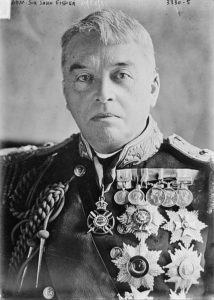 It is certain that the will of the brash Admiral Fisher (photo) was a driving force to revolutionize the British shipbuilding Industry in no time, immediately following the Dreadnought by other developments: Bellerophon and St Vincent classes were already ordered even though the Dreadnought was not completed, their design not taking into account lessons learned from the prototype.
It is certain that the will of the brash Admiral Fisher (photo) was a driving force to revolutionize the British shipbuilding Industry in no time, immediately following the Dreadnought by other developments: Bellerophon and St Vincent classes were already ordered even though the Dreadnought was not completed, their design not taking into account lessons learned from the prototype.
Similarly, British shipbuilding rate was still seen as the decisive factor for Fisher, for decreasing costs, but showing also some sacrifices and shortcuts for the hull protection, and structural weaknesses inherent to the new constraints imposed by this standard of speed and size.
Furthermore, Fisher did not believe in cruisers and lighter ships, since battles theories relied on battleships only, an idea also strongly advocated by Alfred Thayer Mahan, religiously studied by those favorable to an imperialist vision. The RN in 1914 therefore, relegated all its near-obsolete dreadnought to secondary stations throughout the Empire, keeping the edge at home both in quantity and quality.
However, this shipbuilding fever was also compounded by the poor quality of bagged propellants and sometimes the shells themselves. In particular, if protection of munitions stores was adequate at least on paper, shortcuts in operations (where speed overruled safety) resulted in several devastating explosions and tragic losses at Jutland in may 1916.
At the contrary, the quality of British rangefinders had reached an enviable level. Accuracy was excellent although often not always effective because of shells not exploding on impact.
Quite a formidable force indeed
To judge the importance of the matter, it is useful to compare the RN to other navies at that time: 82 battleships, 136 cruisers, 142 destroyers, 80 torpedo-boats and 80 submarines.
82 Battleships
Covering dreadnoughts, pre-dreadnoughts and battle cruisers.
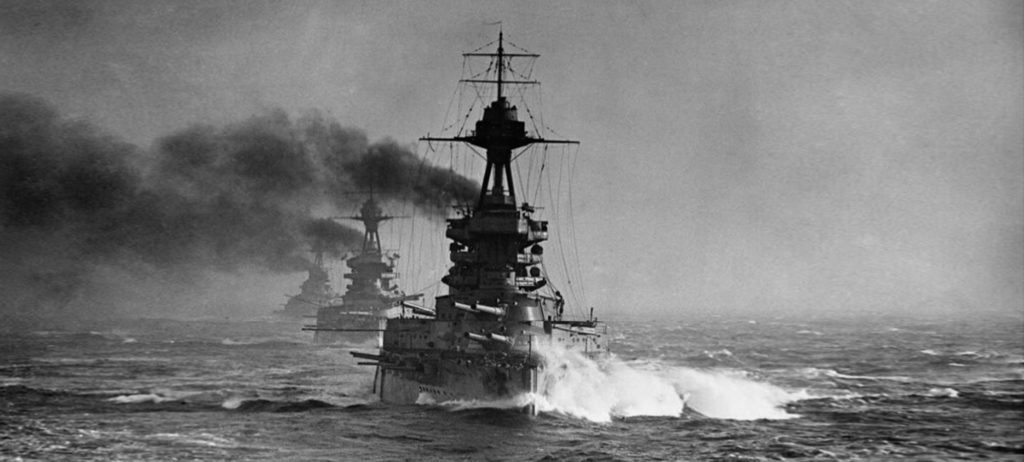
51 Pre-dreadnought battleships:
All have been in service before the HMS Dreadnought was launched in 1906 (some were still under completion). Indeed, more or less experimental, two pre-dreadnoughts, the Nelson and Howe, were launched at the same time that the revolutionary new ship.
These 51 battleships were divided into 9 classes, and an extremely homogeneous force (in contrast with the French “navy of prototypes” produced by the “young school”).
They derived from a standard that imposed itself in 1890. The oldest still in service were the 8 Royal Sovereign (1891-92), followed by 10 Majestic (1895-96), the 6 Canopus (1897-98), 3 Formidable (1898) of 6 London (1899-1902 ), 6 Duncan (1901), 8 King Edward VII (1903-1905), 2 Swiftsure (1903), and 2 Nelson (1906).
FOCUS The famous HMS dreadnought started a battleship revolution in 1906, spawned imitations worldwide, set a new standard and made classic ironclads obsolete overnight. Her name became a whole type of battleships She was fast and carried 2,5 time more artillery than the average battleship of the time (2×2 305mm cannons in turrets). But she was also costly and drawn even more budget strain into the navy.
22 Dreadnoughts:
This lineage started with the HMS Dreadnought itself, in 1906. She was followed the 3 Bellorophon (1907), 3 St Vincent (1908), HMS Neptune (1909) 2 Collossus (1910), 4 Orion (1911), 4 King George IV (1911-1912), 2 Iron Duke (two others in completion), plus five of the Queen Elizabeth and five of the Revenge class under construction.
Moreover, British shipyards have been issued with foreign orders, requisitioned in 1914. These were the HMS Erin (1913, Turkish order), HMS Agincourt (1913, Brazil order), and two Chileans battleships (Almirante Cochrane) still in construction.
Some of these dreadnoughts were worth two or three times the cost and military effectiveness of a pre-dreadnought battleship (see the Agincourt impressive firepower to be convinced). This was also the beginning of an arms race which ended with the treaty of Washington in 1922.
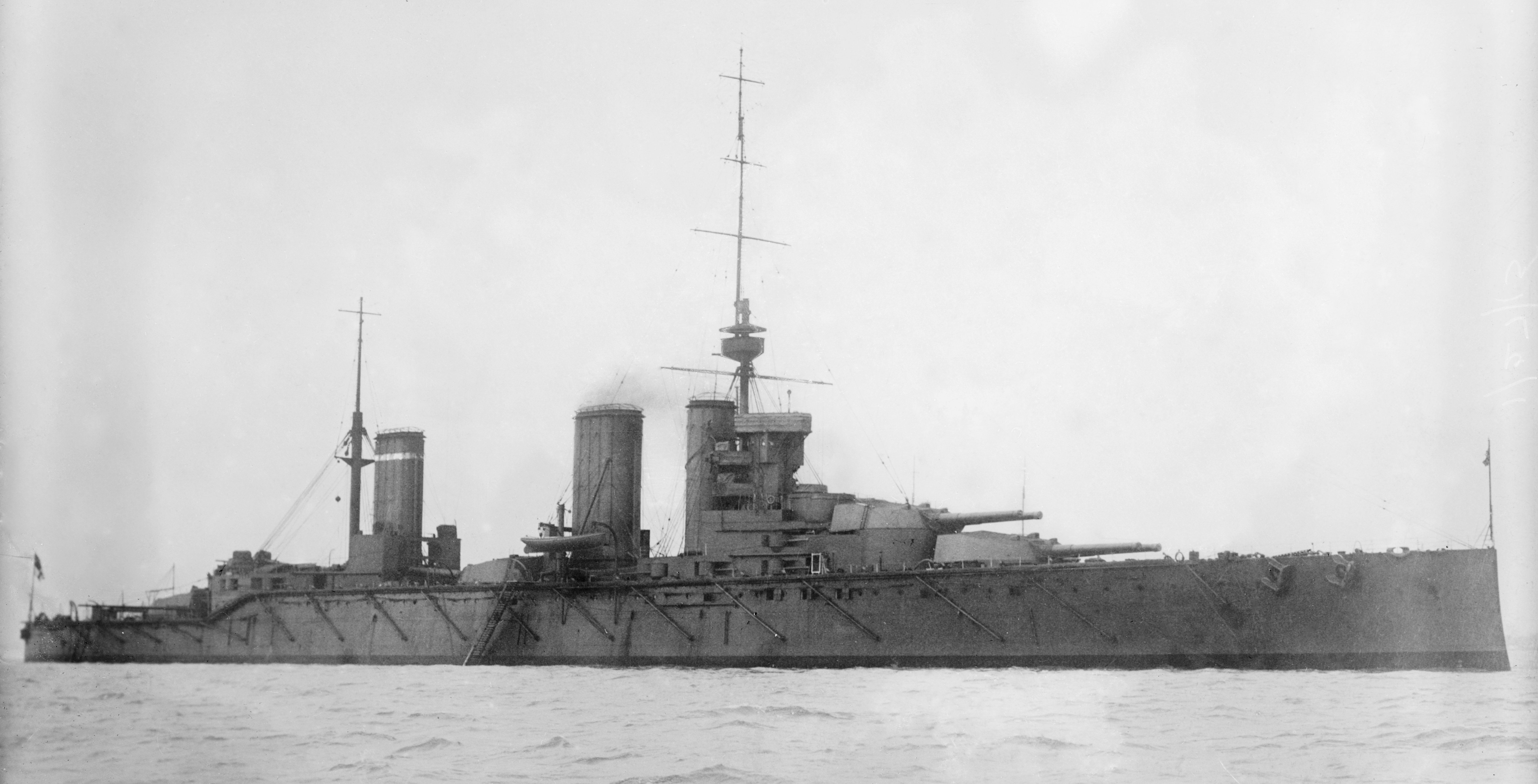
Battlecruiser HMS Princess Royal
9 Battle Cruisers:
The “splendid cats”, dear to Sir John Fisher, were characterized by their high speed, traded for protection. There were the three Invincible class in 1907, and 3 Indefatigable class of 1909-1911 followed by the HMS Lion and Queen Mary in 1912-13. Just being completed in august 1914, was the HMS Tiger.
136 Cruisers
The term encompassed cruisers (thee rates), armoured cruisers, protected cruisers, and scout/light cruisers.
60 Armoured Cruisers
The oldest were the two Blake class (1889), held in reserve. They were followed by nine Edgar class (1893-1896), the two Powerful class (1895), designed to outperform all cruisers and answers the Russian Rurik and Rossiya, the eight Diadem class (1898), the six Cressy class (1899), four Drake class (1901), ten smaller Monmouth class (1903-04), six Devonshire class (1905), Two Duke of Edinburgh class (1904), four Warrior class (1905), and three Minotaur class (1906-1907). None of this kind was built after this, only light cruisers until the end of the Great War.
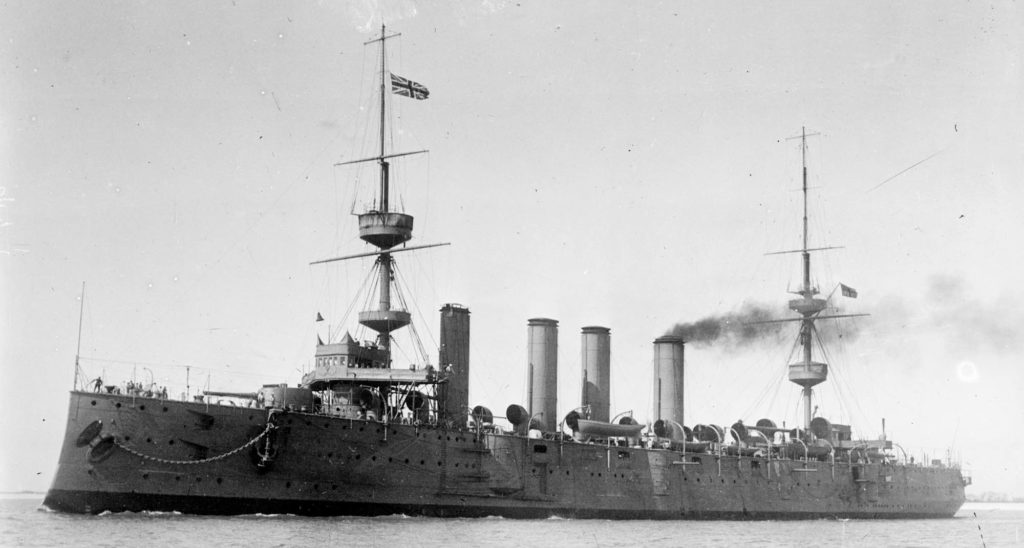
49 Protected cruisers
These ships were generally ancient and ranked as second-class cruisers by the Admiralty. Descending from frigates, thes were among the oldest in service, the eight Apollo class (21 ships originally), already pre-reserve in 1914, the eight Astraea class, nine Eclipse class four Arrogant class, six Highflyer class, five Bristol class, four Weymouth class, and five Chatham class plus the HMAS Brisbane for Australia.
15 Light cruisers (scouts)
The most ancient were fast third class cruisers, four Adventure class, Forward class, Pathfinder class and Sentinel class (1904). There were also two Blonde class (1906) tow Boadicea class (1907),three Active class (1911-1913) which formed the base for wartime cruisers characterized by a better protection.
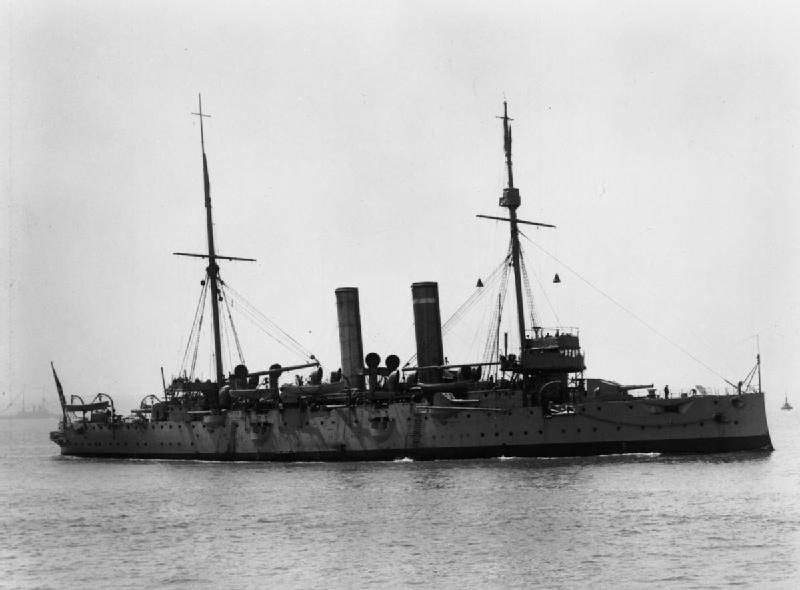
11 Third Class Cruisers
These antediluvian vessels were hardly in service but still enlisted and maintained active. They were also more or less assimilated to large gunboats intended for isolated colonial stations. These were the eight Pelorus class (two in disarmament), and four Gem class (1903).
142 Destroyers
This was through studying different torpedo carrier and first-class torpedo gunboats that Great Britain knew what was best suited to counter to the numerous torpedo boats aligned by the other European powers, including France.
Let start with denominations: “Destroyer” was a simplification of language, derived from the exact “torpedo boat destroyer” a sort of “torpedo boat hunter”.
The “Destroyer” denomination would remain true until today, but essentially for ocean-capable ships, equipped with an imposing artillery and scores of torpedo tubes in banks. However, the first TBDs from 1892 to 1903 was just derived from torpedo boats, therefore quite small and flimsy, coastal in nature, and usually provided with a “turtleback” bridge, to deal with pouring water in rough seas.
The “River” class in 1903 will constitute a small revolution in permanently adopting the forecastle, an innovation followed by all other destroyers to date as it was the best way to deal with the North sea conditions. This also was a trusted way to distinguish them from the torpedo.
Thereafter, the Royal Navy will also introduce the concept of “super-destroyer”, an inflation of tonnage leading to unique units, called “flotilla leaders”, designed to lead destroyer squadrons. By size, armament, and capabilities, these leaders formed the basic blueprint for British 1930s destroyer designs.
Although roughly similar, a hundred early destroyers were built in many shipyards under orders from the Admiralty. These manufacturers were Yarrow, Laird, Thornycroft, Doxford, Palmer, White, Earle, Fairfield, Hawthorn Leslie Armstrong, Thames Iron Works, Vickers, Donald & Wilson, Brown & Thomson.
All shared similar characteristics, having a similar armament, same triple expansion steam engines, but specifications and arrangements varied from one manufacturer to another. They are classified for more practicality as “26 knotters” (5 units, 26 knots, 1893-1894), “27 knotters” (38 units, 1894-1896), “30 knotters” (61 units 1897- 1900), “33 knotters” (3 units, called “special”) and revolutionary prototypes of turbine destroyers, the Viper, Cobra and Velox (1899-1902).
From 1903, the “Rivers” class of forecastle ships entered the fray with 33 units built between 1903 and 1905. These were the ancestors of the mass-produced classes of the Great War, and also the ancestors of standard destroyers worldwide. We can only explain this dispersion as a way for the Admiralty to test configurations before deciding of a standard to follow.
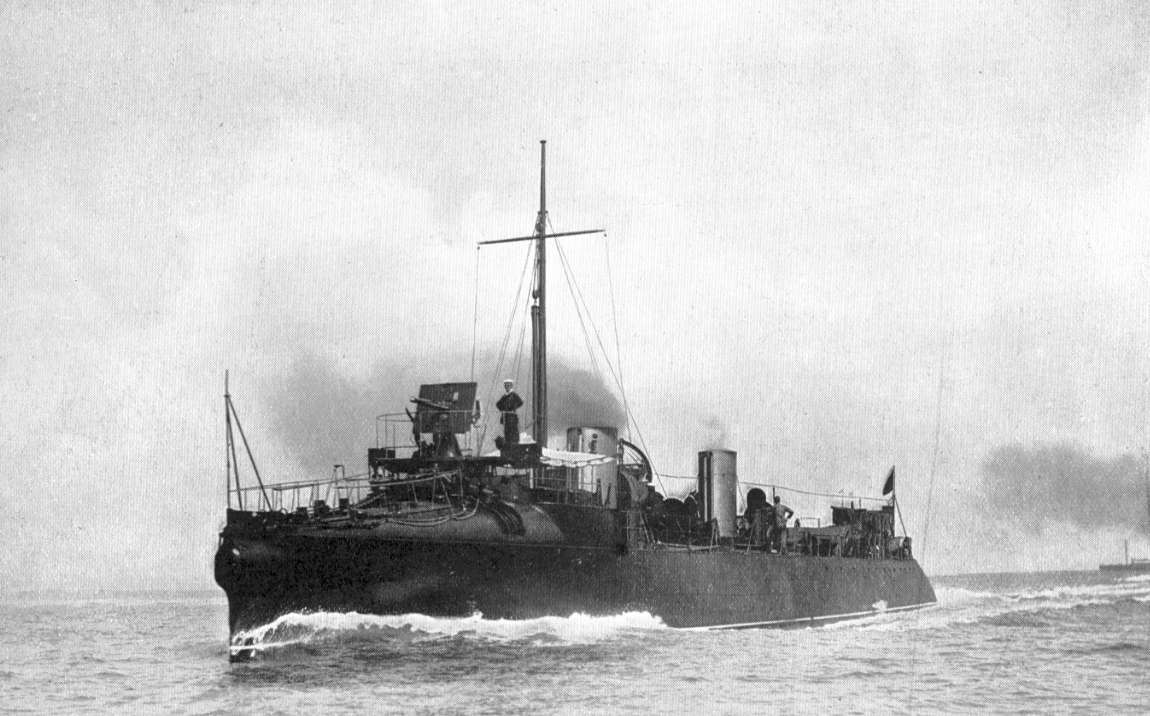
British 27-knotter HMS Daring
With the arrival of Lord Fisher as head of the Admiralty, a new standard for destroyers was defined: It started with the “Tribal” series, 12 rather disparate ships (1907-1909). They were followed by the great squadron leader HMS Swift, then 16 Beagle-class, 20 Acorn-class, 29 Acheron class, 20 Acasta class, and some of the Laforey class, completed by August 1914. All of these could trace their origins back to the Rivers and Tribal-class but were much more standardized.
80 Torpedo-Boats
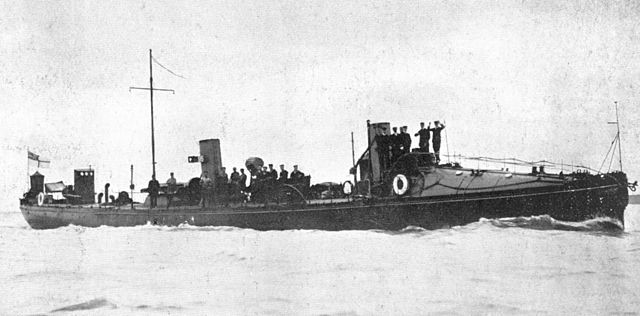
Although this weapon was regarded with disdain by the old high-rank officers of the Royal Navy, no one could at that time remain indifferent to the threat they posed too much larger capital ships.
So when Robert Whitehead presented his torpedo concept and brought it to the production stage, he crossed the path of John Thornycroft, who previously excelled in the production of small, fast turbine ships. He was later coined as the alleged inventor of the torpedo boat, and later its own countermeasure, the destroyer.
Who owns the authorship of this type of vessel? The British unveiled theirs in 1877, the French in 1876, the Italians in 1878, the Germans in 1871, the Austro-Hungarians in 1875, but all bought British units built by Thornycroft or Yarrow. Only Germany in 1871 had units designed locally with Devrient, equipped with a spar with an explosive charge much like Americans Civil War Spuyten Duyvil and David, respectively from the Union and the Confederacy.
TB1, also called Lightning (lightning), was, therefore, one of the first “standards” torpedo boats (using crude torpedo launchers). The Lightning was followed in 1878 by eleven sister ships. Then came a series of 7 meters TB13-TB18 (from different shipyards), then four “113 footers” (1884-1886), 29 “125 footers” (1885-1886), the TB39 (1882), the TB80 (first class) and TB81-82 series (6 units), and the ten “140-footers” (1892-95), eight “160 footers”(1900-1905).
Only a small number of the oldest above TBs participated in the Great War.
At their side were also held in coastal reserve a kind of lightweight TB denominated “second class”, that could be carried in theory by a battleship or a cruiser, acting as a mother ship. The HMS Vulcan was built specialized for this role.
The concept of mother ship for TBs was popular in the years 1878-1885. The series concerned the TB51 (1879), TB64 to 100 (Thornycroft and Yarrow), TB1-12 (White, 1883) Yarrow TB39-50 (1888-1889). Some colonial TBs were also built in 1879-1890 for cheap harbor defense. These second-class boats were obsolete in 1914 but kept in service nevertheless. The Latest were 36 former coastal destroyers of the Cricket class (1906-1909), reclassified as TBs.
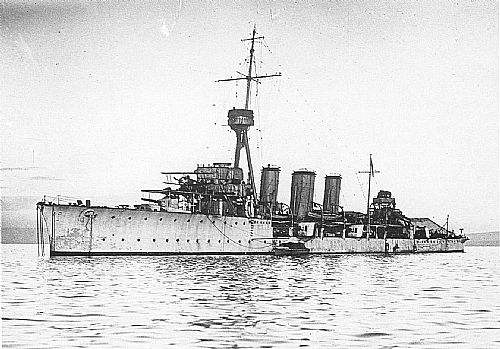
Light cruiser HMS Undaunted (1914)
Gunboats
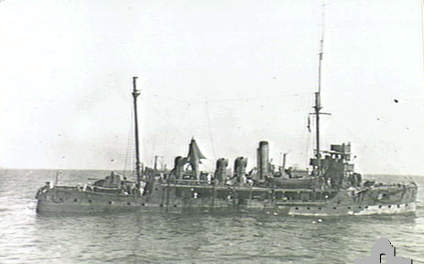
“Gunboat diplomacy” has been practiced extensively by the Royal Navy, first to meet the needs of the Crimean war, and to ensure the presence of the crown in all the colonial cities of the empire.
One can appreciate the contribution of these ships in the number of units that were fielded, often of a remarkable quality, as armed masted barque which formed the bulk of these forces. In 1914, however, most of these surviving ships were quite old.
There vessels of the Bramble (1886), Pigmy (1888) and Redbreast (1889) classes, namely 6 units, but also 4 Bramble (ii) steam only ships from 1898; colonial gunboat Lady Loch (1886), converted to steam, and the old colonial “cruiser” HMS Protector (1884).
Great Britain had also developed torpedo gunboats, the Grasshopper, Sharpshooter, Alarm, and Dryad. The first dated from 1887, the last in 1895. 13 surviving ships were retired in 1914.
80 Submersibles
Like torpedo-boats these were despised by conservative navy officers in the Admiralty, considering these a “despicable”, “odious”, “dishonorable,” way to wage war at sea, considerably delaying any real signs of progress in this area. The most advanced was indeed the Americans and the French at the end of the XIXth century.
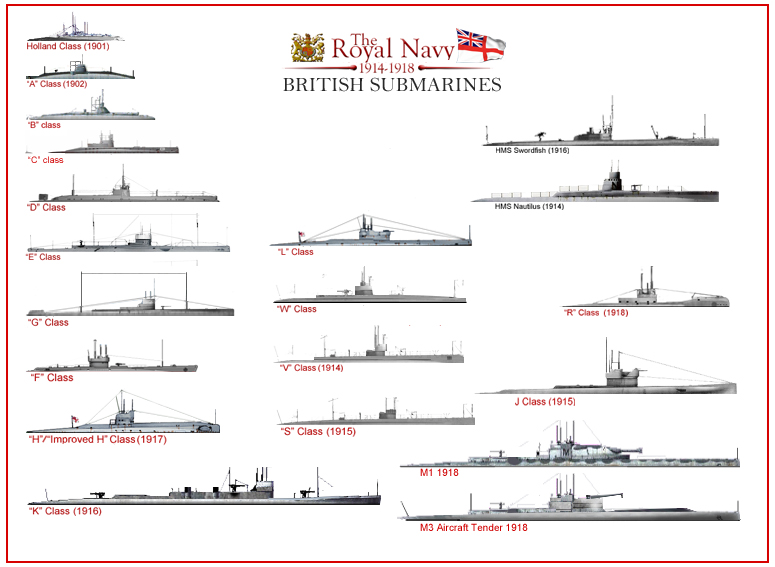
Failing to start effective submarine series, Great Britain studied the use of foreign designs. However, both the language barrier and visceral rejection of a collaboration with French engineers led to adopt of the American patent from John Holland instead. This, therefore, provided the first British submersible series in 1903, pursued by Vickers under license, constantly improving models.
The No. 1, built by Vickers Barrow under Holland license was the first series. These 5 units from 1901 to 1902 served shortly: In 1913, three of them had been already scrapped, and one lost in 1912. Only No.4 was left, virtually inactive during the war. The next series, called “A” will include 13 boats, ordered in 1903-1905.
The first, unsatisfactory prototype served as a target and sank in 1911. The A7 was lost at sea (purge accident) in January 1914. What followed was “B” class from 1904 to 1906 (10 in 1914) less the B2, lost in October 1912. Considerably larger they began to differ to the US units of the “Holland” type. The 38 “C” (1906-1910) were coastal units, quite successful.
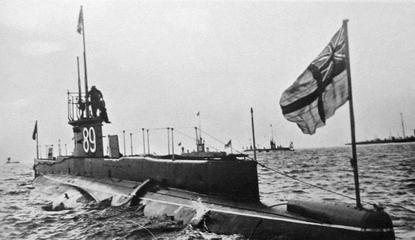
The C11 was lost at sea for unknown causes in 1909. The subsequent eight boats of D-Type were much larger, followed by the first group (pre-war) Class E, 10 boats. Only three of the second group will be operational in time in August 1914.
6 Miscellaneous
There was also a considerable number of miscellaneous ships of all tonnage in service. Not included are depot ships and school ships (unarmed). Torpedo gunboats like HMS Vulcan (1889), and Hecla (1878). The latter was converted into that role in 1889. Both became submersible tankers and destroyers in 1915.
War shipbuilding (1914-18)
21 Battleships:
-Accepted into service was the battlecruiser HMS Tiger in 1914, the two Renown class in August 1916 and the two “light” battlecruisers of the Courageous class in January 1917. The related HMS Furious which followed was completed as a hybrid aircraft carrier.
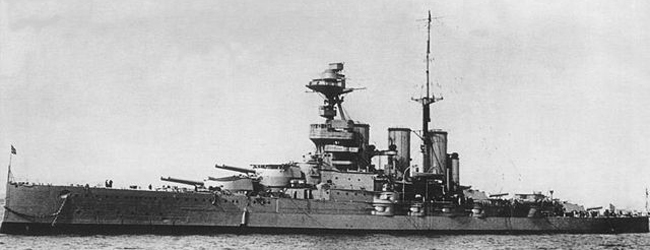
They were also four dreadnoughts of the Iron Duke class, five Queen Elizabeth (1915-16), five Revenge (1916-1917) whereas other dreadnoughts in construction for foreign navies were requisitioned and incorporated into the RN, such as HMS Erin in August 1914 (formerly a Turkish order), HMS Agincourt in August 1914 (ex-Brazilian, also former Turkish order), and HMS Canada in September 1915 (ex-Chilean). Its sister ship was later converted into an aircraft carrier (HMS Eagle).
40 Monitors:
-For Its naval operations near the Belgian coast, among others, she used the monitors armed with reformed battleships naval guns, such as the four Abercrombie (1915), eight Lord Clive (1915), two Marshal Soult (1915) two Erebus (1916), two Gorgon (1918), six coastal light monitors of the M29 class (1915) and those smaller, class M1. They were also the three former river monitors Brazilians requisitioned Humber class (1914), who served in Africa.
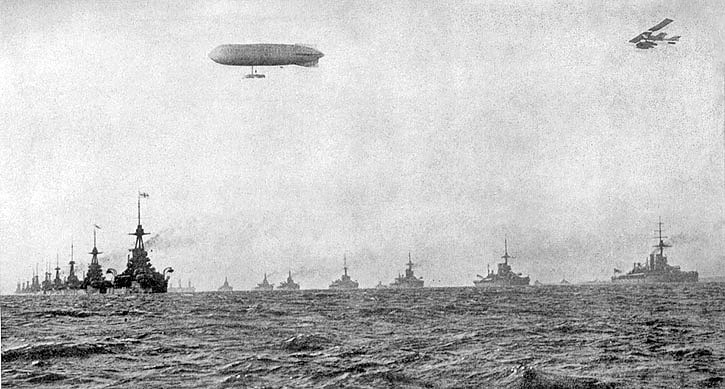
The “Grand Fleet” in its last review, 1914.
15 aircraft “carriers”
Whether proper “aircraft carrier” or ships capable of operating seaplanes, most were converted 1916-1918. One of the earliest was the Ben-My-Chree. A 1908 Liner, it was requisitioned and converted in 1915, operating 4 Short S184 seaplanes in the Mediterranean, and was sunk in 1917 by Turkish coastal artillery.
She was followed by the HMS Vindex, a fast steamer from 1907, converted in 1915, and the HMS Manxman. Both were given a flight deck and therefore were able to operate a large variety of aircraft. They were also equipped with early “catapults”. Later, in 1917, the HMS Nairana followed. The Ark Royal, Empress, Riviera, Engadine, Anne, Raven II, Pegasus, were also later converted from cargo ships and bulk carriers (coal and grain). Two more will be converted in 1919 for the Caspian Sea to support the “whites” during the Russian civil war.
The most famous of these ships were unquestionably the old Campania (1893), a former Cunard luxury liner for the Atlantic, “Blue Ribbon” winner, which was given a broad flight deck but was lost by collision in 1918. The other was the HMS Argus, converted from the Italian liner Conte Rosso, then under construction in Beardmore and requisitioned. It was not accepted into service until September 1918. The sole Real military aircraft carrier on plans was the HMS Furious which trained the first generation of sea airmen. It will be used during the Second World War as an aviation transport.
The fastest of these were two conversions from cruisers of the Grand Fleet: HMS Vindictive, (former heavy cruiser Cavendish) operational in October 1918. This former light cruiser battle was converted aircraft carrier fleet following the failure of the Battle of Jutland. Operational in March 1918, she was the best school for the Royal Navy who served operationally in and changed it to was go. At the end of the war it had conducted several raids successfully and had a continuous and complete with flight deck elevators, shed and catapults.
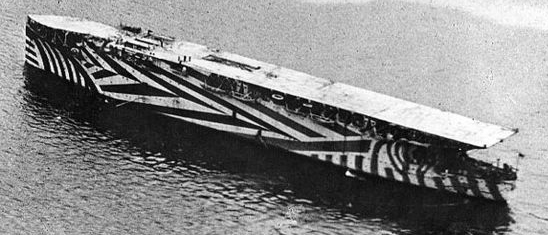
HMS Argus in November 1918.
She pursued her career after two redesigns during the Second World War. Other conversions of this style were planned in 1916: The HMS Eagle was one of them: Dreadnought controlled by Chile under the name of Almirante Cochrane, it was taken over and completed as an aircraft carrier of Wing in 1920. He served in the second World war. The HMS Hermes on her side was the first of an extensive program to tackle the Hochseeflotte in its hideouts in the North Sea. The first aircraft designed from the outset as such, it will be launched in September 1919 and finished in February 1924. she will be lost in the Indian Ocean in 1942.
32 Cruisers
These ships were rather light in the standards of the time. The “heavy” ones has been armoured cruisers last dating back from 1906 and battle cruisers which were assimilated to the battleship class. First, these new cruisers were ships of the Arethusa class, eight vessels whose last was completed in March 1915.
They were followed closely by the six Caroline class (1915), the two Calliope class (1915), two Birkenhead (or “B” -1915-16), four Cambrian, the first “C” clss (1915-1916), followed by two Centaur (1916), four Caledon 1917), and five Ceres 1917-1918.
The series will continue shortly before the November armistice with five Capetown (1918-1922) whose lead ship just made her trials when the war ended, and the twelve Danae, or “D” class from 1918 to 1922, HMS Danae being the only one of her class to see the last days of the great war.
HMS Cavendish, the most advanced of a new series of heavy cruisers was operational in October 1918, not as a cruiser, but an aircraft carrier, under the new name of HMS Vindictive (see above). She will be followed by four other sister ships in 1919-25.
All ships from the Caledon class participated in the Second World War, mostly for escort duties.
232 Destroyers
The yards have not rested during the conflict and cranked up 230 ships, often responsible for ensuring convoys protection. These were the twelve “M” (1914), seven destroyer leaders of the Lightfoot (1915-1916) class, four Faulknor (1914-1915), and later six Parker, five Valentine and eight Shakespeare/Scott, who served as a model later for the new interwar British destroyers, but also of international standard after the Treaty of Washington.
They were also the four Medea class, former Greek orders requisitioned in 1914 and completed in 1915, the 4 Talisman, former Turkish DDs (1915-1916), the “M” for “mobilization”, 89 units strong, the first major series of the war, followed by 62 “R” (1916-1917), 26 “V” (1917-1918), 28 “W” (1917-1918), the 69 “S” of which 24 saw the war. Following were in 1919-20, 15 destroyers type “W-bis” which served in the interwar period.
Many who are cited as S, V and W were of great help during the Second World War as escort ships in the Atlantic. All these destroyers will form the bulk of the British fleet to the mid 1930s. The most singular of these destroyers was not built in Great Britain (although inspired largely of “Rivers”), the HMS Arno, built by Ansaldo in Genoa for Portugal under the name of Liz and bought in March 1915 to serve as an escort ship in the Mediterranean. She was also used in the Dardanelles.
156 Submersibles
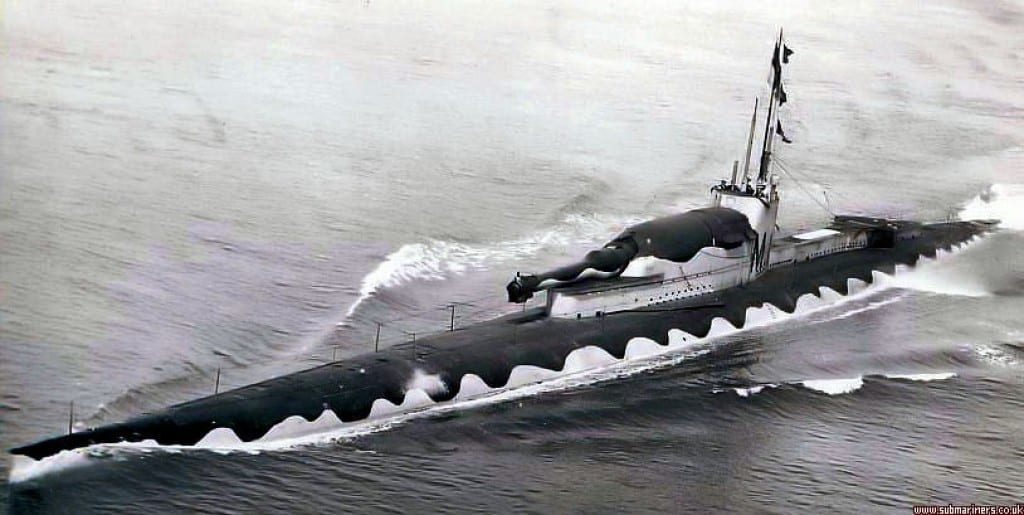
The first submersible series of war were the “E”, in fact the continuation of a class that started in 1913 including forty-seven units in total, operational between 1914 and 1916. Inspired by Italian submersibles of the double-hull Laurenti type, three “S” in 1915 were followed by the four “V” from 1915, the four “W” of 1915-16, the three “F” from 1915 to 1917, HMS Nautilus (1915) and HMS Swordfish (1916) all prototypes, but operational during the war and the K26 (postwar).
They were also the fourteen “G” in 1915-1916, the seventeen large “K” in 1916-1917, ocean, seven “J” from 1915 to 1917, the twenty “H” from 1917 to 1919 and thirty-four “Ha” from 1917 to 1919, of which more than half will not see the service during the great war, unlike the twelve “R” of 1918 to height “L” 1917 and nineteen “L-bis” half of these entered service before the armistice. Five of the L50 class will be completed only after the war, amidst mass cancellations.
The largest British submarines were “sub cruisers of the “M” class. Three equipped with a 12 in (305 mm) gun, intended for shore bombardment. Only M1 was operational before the armistice.
865 miscellaneous (+580 transferred from USA)
During the conflict, one of the major threats quickly appeared as the submarine blockade orchestrated by German U-Boats. Battleships, cruisers and destroyers being not very effective in this role, the Admiralty quickly chooses to launch a series of dedicated ships, quite new in the English naval hierarchy, an, crucially in the war effort, built by civilian shipyards, naval yards being saturated with orders and already short in manpower.
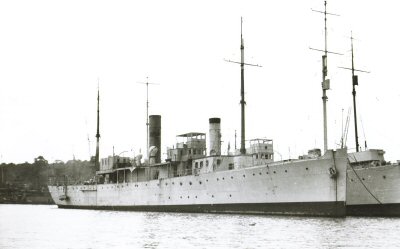
Thus was born the famous escorts sloops of the “Flower” class, including subclasses Acacia (1915), Azalea (1915), Arabis (1915-1916), Aubretia (1916-1917) and Anchusa (1917) , respectively 24, 12, 36, 12, 28 ships. The 21 type “24” were only operational, for some, in the fall of 1918, and notorious for their totally symmetrical hull shape to fool U-boats on their direction.
The 20 units (1917 to 1918) of the type “PC-Boat” were “decoys”, “boat traps” specially constructed alongside the many conversions of cargo, and for disclosing their artillery, previously hidden under the submersible German guard vessel at the last moment, leaving no chance.
With “unrestricted submarine warfare”, German submariners increasingly skipped the boarding phase of cargo ships and sanks them without warning, making the decoy ships obsolete overnight. The idea was nevertheless applied during the next war… by the Germans.
Finally, naval yards which ususally delivered destroyers were ordered 43 “P-Boats“, specialized patrol lightweight coastal dedicated submarine hunters. mimicking the shape of submarines, they were quickly supported by an armada of American-built SC-Boats and Eagle Boats in 1918.
In the same spirit, and next to a large number of trawler conversions, eighteen “Kil“, patrol boats were pressed into service. They were civilian-built, inspired by whalers and quickly found more efficient than converted trawler, as well as 15 smaller Z-Whaler. They had the range, ruggedness in heavy seas, high prow, range and observation features that were perfectly fit to the task of tracking submarines in the north sea.
In mine warfare, the twenty-four paddle-steamer Ascot class, followed by height Banbury and seven Fulmar classes, put an end to this type of propulsion. The more modern Hunt (20 vessels) and Aberdare (32 vessels) were soon preferred. The fourteen Dance-class were coastal units.
In order to serve on Chinese rivers, the Royal Navy also ordered the construction of sixteen “Fly“, and twelve “Insect” to serve on the Danube. These were armed with reformed cruiser’s guns and armored.
Including the Dardanelles, the RN built and operated its first dedicated landings barges, called the type X-Lighter, 250 units followed by 90 Y-Lighter, and 20 barges to serve the Middle East.
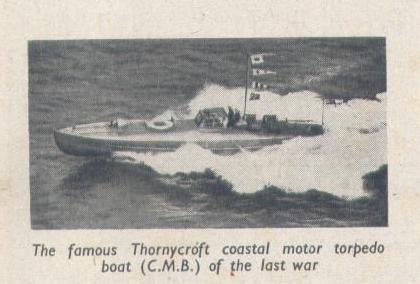
Coastal defense units, adapted to U-boat and light ships hunting in patrols were deployed in large numbers from 1917, inspired by the Italian MAS boats: These were the CMB series 40, 55 and 70 feet, respectively 38, 87 and 7 units, and no less than 580 ML, light gunboats, constructed by Elco in the USA on british specs.
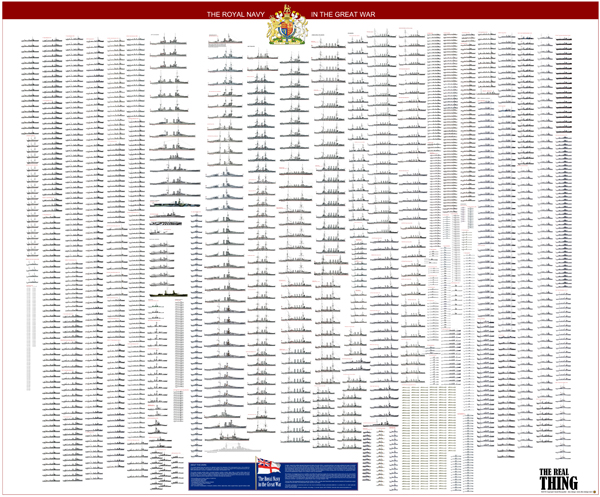
The Grand fleet, HD Illustration. Order
Read More/Src
Books
Chet, Guy (2014). The Ocean is a Wilderness: Atlantic Piracy and the Limits of State Authority.
Clodfelter, Micheal (2017). Warfare and Armed Conflicts: A Statistical Encyclopedia of Casualty and Other Figures, 1492–2015. McFarland & Co Inc.
Grimes, Shawn T. (2012). Strategy and War Planning in the British Navy, 1887–1918. Boydell.
Harding, Richard (2005). The Royal Navy 1930–2000: Innovation and Defence. Frank Cass.
Howard, David Armine (2003). British Sea Power: How Britain Became Sovereign of the Seas. Carroll & Graf.
Hyde-Price, Adrian (2007). European Security in the Twenty-First Century: The Challenge of Multipolarity. London: Routledge.
Kennedy, Paul (1989). The Rise and Fall of Great Powers. London: Fontana.
Morris, Jan (1979). Farewell the Trumpets. Penguin Books.
Nelson, Arthur (2001). The Tudor navy: the ships, men and organisation, 1485–1603. Conway Maritime Press.
Potter, E. B. (1984). Sea Power: A Naval History. Naval Institute press.
Rodger, N.A.M. (1997). The Safeguard of the Sea: A Naval History of Britain, 660–1649. Vol. 1. HarperCollins.
Rodger, N.A.M. (2004). The Command of the Ocean: A Naval History of Britain, 1649–1815. Vol. 2. Penguin.
Rose, Lisle A. (2006). Power at Sea: The Breaking Storm, 1919–1945. Vol. 2. University of Missouri Press.
Sondhaus, Lawrence (2001). Naval Warfare, 1815–1914. New York: Routledge.
Stanton, Charles (2015). Medieval Maritime Wartime. South Yorkshire: Pen & Sword Maritime..
Willmott, H. P. (2009). The Last Century of Sea Power: From Port Arthur to Chanak, 1894–1922. Vol. I. Indiana University Press.
Willmott, H. P. (2010). The Last Century of Sea Power: From Washington to Tokyo, 1922–1945. Vol. 2. Indiana University Press.
Wilson, Ben (2013). Empire of the Deep: the rise and fall of the British Navy. Weidenfeld & Nicolson.
Winfield, R. (2007). British Warships of the Age of Sail 1714–1792: Design, Construction, Careers and Fates. Seaforth.
Benbow, Tim (2018). The Royal Navy and Sea Power in British Strategy, 1945–55 (pdf) (Thesis). King’s College London.
Brown, D. K.; Moore, George (2012). Rebuilding the Royal Navy: Warship Design Since 1945. Seaforth.
Crimmin, Patricia K. “The Supply of Timber for the Royal Navy, c. 1803–c. 1830.” The Naval Miscellany (Routledge, 2020)
Glaser, Darrell, and Ahmed Rahman. “Between the Dockyard and the Deep Blue Sea: Retention and Personnel Economics in the Royal Navy.”
Harding, Richard. “The royal navy, history and the study of leadership.” in Naval Leadership in the Atlantic World: The Age of Reform and Revolution, 1700–1850 (2017)
Houlberg, Kristian, Jane Wickenden, and Dennis Freshwater. “Five centuries of medical contributions from the Royal Navy.” Clinical Medicine 19.1 (2019)
Kennedy, Paul. The rise and fall of British naval mastery (Penguin UK, 2017).
Lincoln, Margarette. Representing the Royal Navy: British Sea Power, 1750–1815 (Routledge, 2017).
Neufeld, Matthew. “The biopolitics of manning the Royal Navy in late Stuart England.” Journal of British Studies 56.3 (2017)
Roberts, Hannah. The WRNS in wartime: the Women’s Royal Naval Service 1917–1945 (IB Tauris, 2018)
Seligmann, Matthew S. “A Service Ready for Total War? The State of the Royal Navy in July 1914.” English Historical Review 133.560 (2018)
Wilson, Evan. “Particular skills: Warrant officers in the Royal Navy, 1775–1815.” in A new naval history (Manchester University Press, 2018).
Clowes, William Laird; Markham, Clements Robert, Sir.; Mahan, Alfred Thayer; Wilson, Herbert Wrigley (1897–1903). The Royal Navy, a history from the earliest times to present. Vol. I. London : Samson Low, Marston, Co.
Clowes, William Laird; Markham, Clements Robert, Sir.; Mahan, Alfred Thayer; Wilson, Herbert Wrigley (1897–1903). The Royal Navy, a history from the earliest times to present. Vol. II. London : Samson Low, Marston, Co.
Links
Social Mobility and Promotion of Officers to Senior Ranks in the Royal Navy: Meritocracy or Class Ceiling?” Armed Forces & Society (2020)
colorized photos b irootoko Jr
en.wikipedia.org/wiki/Royal_Navy
royalnavy.mod.uk/

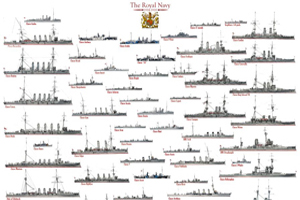

 Latest Facebook Entry -
Latest Facebook Entry -  X(Tweeter) Naval Encyclopedia's deck archive
X(Tweeter) Naval Encyclopedia's deck archive Instagram (@navalencyc)
Instagram (@navalencyc)





 French Navy
French Navy Royal Navy
Royal Navy Russian Navy
Russian Navy Armada Espanola
Armada Espanola Austrian Navy
Austrian Navy K.u.K. Kriegsmarine
K.u.K. Kriegsmarine Dansk Marine
Dansk Marine Nautiko Hellenon
Nautiko Hellenon Koninklije Marine 1870
Koninklije Marine 1870 Marinha do Brasil
Marinha do Brasil Osmanlı Donanması
Osmanlı Donanması Marina Do Peru
Marina Do Peru Marinha do Portugal
Marinha do Portugal Regia Marina 1870
Regia Marina 1870 Nihhon Kaigun 1870
Nihhon Kaigun 1870 Preußische Marine 1870
Preußische Marine 1870 Russkiy Flot 1870
Russkiy Flot 1870 Svenska marinen
Svenska marinen Søværnet
Søværnet Union Navy
Union Navy Confederate Navy
Confederate Navy Armada de Argentina
Armada de Argentina Imperial Chinese Navy
Imperial Chinese Navy Marinha do Portugal
Marinha do Portugal Mexico
Mexico Kaiserliche Marine
Kaiserliche Marine 1898 US Navy
1898 US Navy Sovietskiy Flot
Sovietskiy Flot Royal Canadian Navy
Royal Canadian Navy Royal Australian Navy
Royal Australian Navy RNZN Fleet
RNZN Fleet Chinese Navy 1937
Chinese Navy 1937 Kriegsmarine
Kriegsmarine Chilean Navy
Chilean Navy Danish Navy
Danish Navy Finnish Navy
Finnish Navy Hellenic Navy
Hellenic Navy Polish Navy
Polish Navy Romanian Navy
Romanian Navy Turkish Navy
Turkish Navy Royal Yugoslav Navy
Royal Yugoslav Navy Royal Thai Navy
Royal Thai Navy Minor Navies
Minor Navies Albania
Albania Austria
Austria Belgium
Belgium Columbia
Columbia Costa Rica
Costa Rica Cuba
Cuba Czechoslovakia
Czechoslovakia Dominican Republic
Dominican Republic Haiti
Haiti Hungary
Hungary Honduras
Honduras Estonia
Estonia Iceland
Iceland Eire
Eire Equador
Equador Iran
Iran Iraq
Iraq Latvia
Latvia Liberia
Liberia Lithuania
Lithuania Mandchukuo
Mandchukuo Morocco
Morocco Nicaragua
Nicaragua Persia
Persia San Salvador
San Salvador Sarawak
Sarawak Uruguay
Uruguay Venezuela
Venezuela Zanzibar
Zanzibar Warsaw Pact Navies
Warsaw Pact Navies Bulgaria
Bulgaria Hungary
Hungary

 Bundesmarine
Bundesmarine Dutch Navy
Dutch Navy Hellenic Navy
Hellenic Navy Marina Militare
Marina Militare Yugoslav Navy
Yugoslav Navy Chinese Navy
Chinese Navy Indian Navy
Indian Navy Indonesian Navy
Indonesian Navy JMSDF
JMSDF North Korean Navy
North Korean Navy Pakistani Navy
Pakistani Navy Philippines Navy
Philippines Navy ROKN
ROKN Rep. of Singapore Navy
Rep. of Singapore Navy Taiwanese Navy
Taiwanese Navy IDF Navy
IDF Navy Saudi Navy
Saudi Navy Royal New Zealand Navy
Royal New Zealand Navy Egyptian Navy
Egyptian Navy South African Navy
South African Navy






























 Ukrainian Navy
Ukrainian Navy dbodesign
dbodesign